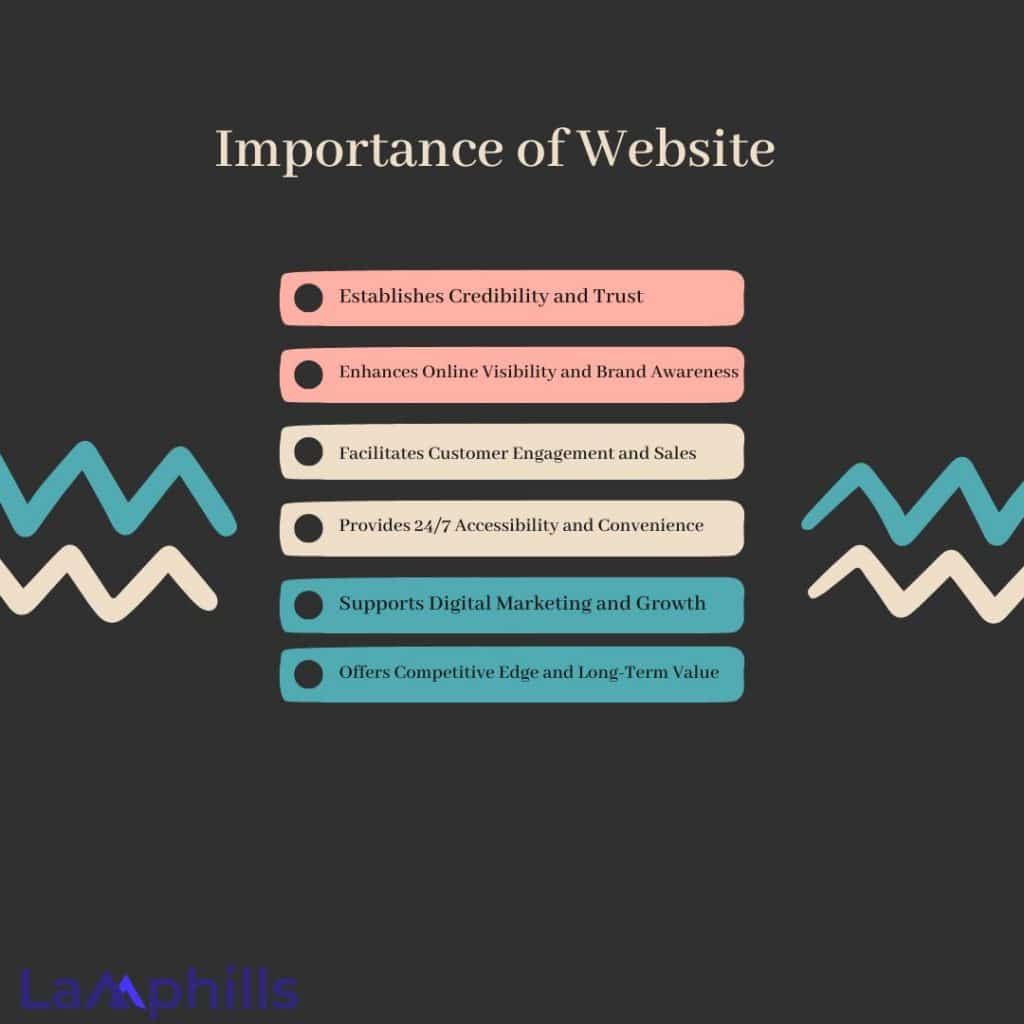In today’s fast-paced digital world, having an online presence is essential for any business. But the big question remains—should you focus on building a comprehensive website or create a targeted landing page to boost conversions? Websites give your audience the full picture of your business, while landing pages are all about driving specific actions. If you’re trying to convert more visitors into paying customers or valuable leads, this article will help you decide whether to use a landing page vs. a full website—and how important they are to your business.
Key Points
- A website is like your digital business hub, showcasing everything about your company, from services to your brand story. In contrast, a landing page is built for one specific goal—usually tied to a marketing campaign.
- Websites with multiple pages and navigation menus allow visitors to explore sections like “About Us” or “Services.” Landing pages strip away all distractions.
- Websites are a long-term asset that represents your business 24/7, while landing pages are campaign-specific and temporary. Once the promo or campaign ends, you can take down the landing page.
- CRO agencies can significantly boost the effectiveness of both your website and landing pages. For websites, CRO helps optimize everything from user journeys to content flow, while for landing pages, it sharpens CTAs and reduces friction.
What is a landing Page?
A landing page is a standalone web page designed for a specific goal or campaign, focusing on conversion rates. It’s a surgical tool in online marketing, crafted for a singular campaign or offer. A landing page is where a visitor “lands” after clicking on a link in an email, targeted ads, or similar places on the web. A landing page is a single web page created specifically for a marketing or advertising campaign, designed to convert visitors into leads or customers through a single call-to-action (CTA).
It describes an individual offer, product, or service, usually without navigation menus, and uses a form where visitors can claim the offer and become leads. A landing page is designed to describe an offer—maybe a coupon, ebook, or free trial—and encourage visitors to claim it. Its main purpose is to drive sales or capture leads.
What is a Website?
A website is a collection of interconnected web pages under a single domain name, serving as a digital storefront for businesses. It’s an online platform detailing your business, organization, or company with various content such as about pages, product descriptions, contact information, blogs, and more.
A website’s primary purpose is to describe and explain your organization or business, provide access to services, and facilitate interaction between your brand and audience. Effective websites have simple layouts multiple navigation selections, and include essential pages like About, Services, Contact, Careers, and FAQs.
Differences Between Landing Page vs. Website
Landing pages and websites serve distinct purposes in online marketing. While they share some similarities, understanding the differences between landing pages and websites
is crucial for effective digital strategies. Here are six well-detailed differences between landing pages vs websites:
#1. Purpose
Websites provide a comprehensive overview of an organization’s online presence, including its story, products, services, mission, and values. In contrast, landing pages are designed with a singular focus, aiming to persuade visitors to take a specific action, such as signing up for a newsletter, downloading an e-book, or making a purchase. This targeted approach enables businesses to drive conversions and achieve specific marketing goals. By concentrating on a single objective, landing pages eliminate distractions and optimize the visitor experience.
For instance, a fitness company’s website might showcase various programs, services, and company information. In contrast, a landing page for the same company might focus solely on promoting a new yoga program, with a clear call-to-action (CTA) to sign up.
#2. Longevity
Landing pages are temporary, tied to specific marketing campaigns, and are typically removed or replaced once the campaign ends. Websites, on the other hand, are permanent fixtures providing an enduring online presence. This permanence allows websites to establish a brand’s identity, build trust, and provide ongoing information and resources to visitors.
Consider an e-commerce company that creates a landing page for a holiday sale. Once the sale ends, the landing page is removed. Meanwhile, the company’s website remains active, continuing to provide information and facilitate sales year-round.
#3. Focus
Websites cater to a wide audience’s diverse needs and interests, offering a broad range of information and functionalities. In contrast, landing pages are laser-focused, stripping away distractions to drive conversions. By eliminating navigation menus and extraneous content, landing pages guide visitors toward a specific action, increasing the likelihood of conversion.
For example, a university’s website might include various sections for prospective students, current students, faculty, and alumni. A landing page for the same university might focus exclusively on promoting a specific program, such as an MBA, with a clear CTA to apply.
#4. Design
Landing pages require streamlined designs to eliminate distractions and ensure visitors focus on the value proposition and corresponding call-to-action (CTA). This design approach typically includes essential elements such as headlines, images, forms, and CTAs. Websites, however, aim to drive traffic and engagement across the entire site, incorporating various design elements, such as navigation menus, sidebars, and footer sections.
Imagine a landing page for a new smartphone. The design is minimalist, highlighting key features and a “Buy Now” CTA. In contrast, the company’s website includes multiple pages, navigation menus, and detailed product information.
#5. Navigation
Websites have navigation menus to help visitors explore various pages, discover new content, and access different sections of the site. Landing pages often lack navigation menus or have limited navigation to prevent distractions and maintain focus on the primary objective. For instance, a software company’s website has a navigation menu with links to features, pricing, and support. A landing page for the same company’s free trial offer has no navigation menu, ensuring visitors focus on signing up.
#6. Content
The landing page content is concise and focused, quickly followed by a CTA. This targeted content typically includes key messaging, benefits, and social proof. Website content, however, is often longer and more informative, providing visitors with in-depth information about products, services, company history, and mission.
Consider a travel company’s website, which includes detailed descriptions of destinations, itineraries, and travel tips. A landing page for the same company’s vacation package might concisely highlight the package’s benefits, price, and “Book Now” CTA.
Importance of Landing Page
Here are the six detailed importance of landing pages:
#1. Targeted Conversions
Landing pages are specifically designed to convert visitors into leads or customers, providing a targeted path to conversion and streamlining the user experience. They offer relevant and concise information, enhancing the user experience and directly influencing decision-making. By focusing on a single goal, landing pages eliminate distractions, increasing the chances of achieving desired outcomes. This targeted approach enables marketers to measure campaign effectiveness and refine strategies.
#2. Data-Driven Insights
Landing pages allow marketers to track user behavior, providing valuable data-driven insights to understand campaign effectiveness. This insight informs future marketing strategies, optimizing results and enabling marketers to measure user engagement. With landing pages, marketers can analyze metrics such as click-through rates, conversion rates, and bounce rates, identifying areas for improvement. Data-driven insights enable marketers to refine targeting, messaging, and design elements.
#3. Search Engine Visibility
Optimized landing pages improve search engine rankings, increasing visibility and attracting more traffic. This increased exposure drives quality leads, boosting conversion rates and supporting business goals. Search engine optimization (SEO) best practices, such as relevant keywords and meta descriptions, enhance landing page visibility. Higher search engine rankings also establish credibility and trust with potential customers.
#4. Credibility and Trust
Landing pages capture leads by offering valuable resources in exchange for contact information, establishing credibility and trust. Professionally designed landing pages demonstrate expertise and trustworthiness, which are essential for converting visitors into customers. Consistent branding, clear messaging, and customer testimonials further reinforce credibility. Landing pages can also showcase industry certifications, awards, or recognition.
#5. Targeted Messaging and Cost-Effectiveness
Landing pages enable targeted messaging, catering to specific audience segments and improving engagement and relevance. They provide a cost-effective marketing solution, yielding high returns on investment through focused marketing efforts. By targeting specific demographics, interests, or behaviors, marketers increase conversion rates and reduce waste. Landing pages also enable A/B testing, allowing marketers to refine messaging, design, and calls to action.
#6. Business Goal Achievement
Landing pages support various business objectives, such as email list building, sales, or event registration. A clear call to action drives visitors toward the desired outcome, providing a direct and concise path to achieving business goals. Landing pages can also facilitate lead nurturing, educating visitors about products or services. By aligning landing pages with business goals, marketers ensure maximum ROI and campaign effectiveness.
Importance of Website

Just like landing pages, websites have their own importance. Here are the six detailed importance of websites:#1. Establishes Credibility and Trust
A professional website is crucial for establishing credibility and trust with potential customers. It showcases expertise, values, and mission, differentiating your business from competitors. A well-designed website conveys professionalism, attention to detail, and commitment to quality. This includes regularly updated content, clear contact information, secure payment processing, and industry certifications.
#2. Enhances Online Visibility and Brand Awareness
Websites increase online visibility through various strategies. Search engine optimization (SEO) improves search engine rankings, while content marketing provides valuable information to potential customers. Social media integration expands your online presence, and local search optimization targets local customers. Consistent branding ensures recognition across online platforms.
#3. Facilitates Customer Engagement and Sales
Websites engage customers through clear calls-to-action, interactive features, personalized content recommendations, streamlined checkout processes, and customer support portals. These features encourage visitors to take action, driving sales and revenue growth. Effective content strategies, email marketing, and lead-generation tactics also contribute to customer engagement.
#4. Provides 24/7 Accessibility and Convenience
Websites offer round-the-clock access to product or service information, online shopping, support resources, contact forms, and email support. Mobile optimization ensures seamless access on various devices. This convenience fosters customer loyalty, satisfaction, and retention.
#5. Supports Digital Marketing and Growth
Websites enable data analysis, performance tracking, email marketing integration, social media campaign tracking, content marketing strategy development, and A/B testing. By leveraging these tools, businesses refine marketing strategies, drive growth, and increase conversions.
#6. Offers Competitive Edge and Long-Term Value
A well-designed website sets your business apart, establishing a strong foundation for long-term success. It provides unique selling proposition showcases, competitive analysis, customer retention strategies, brand establishment, and recognition.
Should You Create a Landing Page or Rely on Your Website?
When it comes to online marketing, one crucial decision is whether to create a landing page or stick with your website. Let’s break it down together.
#1. Define Your Goals
Start by identifying what you want to achieve. Are you launching a new product, promoting a sale, or building your email list? For instance, imagine you’re the owner of a trendy online sock company. If you’re just starting out, a website showcasing your brand story and products might be the way to go. However, if you’re running a contest for new email subscribers to win a year’s supply of socks, a dedicated landing page can drive conversions.
#2. Test and Optimize
A/B testing is your friend! Compare different versions of landing pages or websites to see what resonates with your audience. Which design, language, or graphics drive more traffic and sales? You can even pit landing pages against websites to determine which performs better for specific goals.
#3. Put Yourself in Your Customer’s Shoes
Think like your customer. Would they rather search your website for a free trial offer or land directly on a page with a clear call to action? Consider this: if your website focuses on educating and introducing products, but your goal is to share a coupon, a targeted landing page saves customers time and increases conversions.
What Is the Value of a Landing Page?
The most important purpose of a landing page is general lead generation, contained in 4 pillars: Transforming site visitors into potential leads by collecting their data via a lead capture form. Focusing on particular audience segments. Offering them enticing incentives in return for their contact details.
Are Landing Pages Profitable?
The better you understand the audience and their problem, the more likely your landing page is to convert. Businesses will gladly pay you to generate leads for them. That’s one way you can make money with landing pages. This is called a lead generation business.
Is Google Sites a Landing Page?
Google Sites provides an easy starting point for creating landing pages. With the right template, customization, and promotion, you can start generating more leads for your business without coding. Key steps we covered include Choosing simple conversion-focused templates.
To maximize your online success, it’s essential to optimize your conversion rates effectively. Use the following Conversion Rate Optimization (CRO) FREE Checklist to guide your efforts and enhance your website or landing page performance:
Conversion Rate Optimization (CRO) Checklist.PDF
Conclusion
Both landing pages and websites have their own strengths when it comes to driving business growth. Websites offer a broader overview of your brand, while landing pages are laser-focused on conversions. If you’re targeting specific business goals —whether building leads or boosting sales—consider using a mix of both. And don’t forget, conversion rate optimization agencies can be your secret weapon for getting the best out of each.
Related Articles
- Examples of High-Performing B2B Website That Converts in 2024
- 15+ MARKETING WEBSITES EVERY MARKETER SHOULD KNOW
- 12 Sure Tips for Improving Your Conversions Using Website Copywriting
- (10+)Proven Landing Page Design Best Practices for 2024






